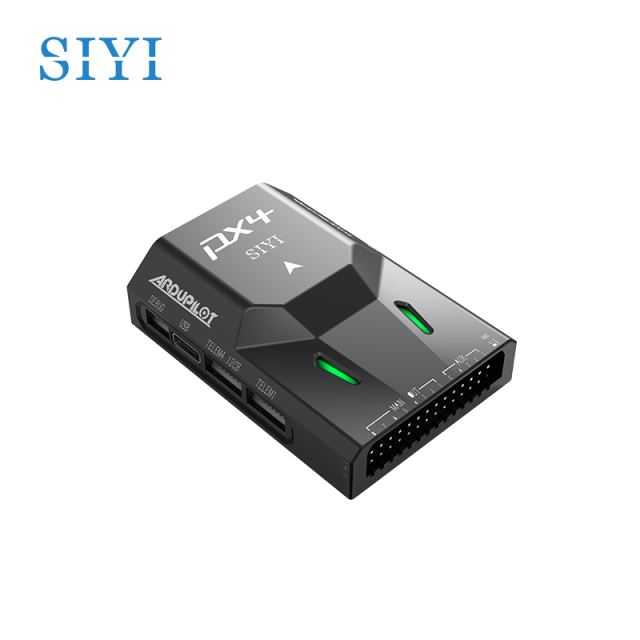Understanding the Crucial Features and Functions of a Drone Trip Controller for Optimum Airborne Efficiency
The trip controller serves as the essential part in a drone's architecture, managing its movements and making certain stability through a sophisticated interplay of information and sensors handling. With advancements in innovation, the landscape of trip controllers is swiftly evolving, prompting a better assessment of what genuinely specifies optimal capability in this important system.
Introduction of Trip Controllers
When discovering the globe of drone technology, understanding flight controllers is necessary for both specialists and hobbyists alike. Trip controllers act as the brain of the drone, managing its activities and guaranteeing security throughout flight (SparkNavi drone flight controller and GNSS/INS made in taiwan). They process data from numerous sensing units, including accelerometers, gyroscopes, and barometers, to keep balance and reply to pilot inputs efficiently
The design of flight controllers can vary dramatically, varying from basic versions created for entry-level drones to sophisticated systems outfitted with innovative attributes for expert applications. The integration of GPS capabilities allows accurate navigating and positioning, while programmable firmware allows customers to customize flight features to suit their details demands.
Moreover, trip controllers are pivotal in facilitating interaction in between the drone and the push-button control, making it possible for real-time adjustments and telemetry data transmission. Recognizing the different sorts of trip controllers, consisting of multi-rotor, fixed-wing, and crossbreed systems, is critical for selecting the ideal design for a provided application. Ultimately, a comprehensive grasp of flight controllers not just enhances the flying experience however also maximizes the efficiency and security of drone operations.
Secret Features of Flight Controllers
Trip controllers play a crucial role in handling a drone's trip characteristics by performing a number of essential functions that make certain security and responsiveness. One of the key features is the stabilization of the drone's orientation and altitude. This is attained via the assimilation of numerous sensors, including barometers, accelerometers, and gyroscopes, which constantly keep track of the drone's placement and activity.
.png)
An additional necessary function is the processing of control inputs from the pilot or independent systems. The trip controller interprets these inputs and adjusts the drone's motor rates appropriately to achieve the preferred flight course. This includes handling pitch, roll, and yaw, which are critical for ability to move.
In addition, trip controllers are equipped with reliable devices. These functions are developed to reply to vital situations, such as low battery degrees or loss of signal, by initiating predefined actions like returning to the launch point or floating in area.

Necessary Attributes to Think About
When selecting a drone trip controller to make certain optimum efficiency and reliability,Numerous necessary functions must be taken into account. One essential element is the controller's handling power, which determines its capability to handle intricate trip formulas and real-time data handling. A higher processing capacity improves responsiveness and stability during trip.
An additional vital attribute is the number of supported flight settings. A functional flight controller should supply numerous modes, consisting of acro, altitude hold, and GPS-assisted settings, providing to different pilot ability levels and functional circumstances. In addition, the visibility of integrated safety and security functions, such as fail-safes and geofencing, can considerably boost functional safety.
Compatibility with different communication methods is additionally vital, as it makes sure smooth combination with various other devices and peripherals, such as remote controllers and telemetry systems. Moreover, the controller's firmware have to be user-friendly and frequently upgraded to directory integrate new features and optimizations.
Combination With Sensors and Equipments
A trip controller's performance is heavily influenced by its capability to incorporate with numerous sensors and systems. This integration is essential as it makes it possible for the flight controller to obtain real-time data required for efficient trip monitoring. Secret sensors include GPS, inertial measurement units (IMUs), barometers, and magnetometers, each giving vital information regarding the drone's altitude, setting, and alignment.

Furthermore, progressed flight controllers support integration with haul systems, including cams and various other sensors, making it possible for enhanced performances such as independent navigation and obstacle avoidance. This interconnectedness not just boosts the drone's functional capabilities yet also increases its application potential throughout various markets, from aerial photography to farming surveillance. Therefore, a well-integrated flight controller is essential for accomplishing optimum airborne performance and guaranteeing the dependability of drone procedures.
Tips for Optimizing Efficiency
To make the most of the performance of your drone, numerous crucial strategies can be used that emphasis on enhancing both equipment and software application elements. Guarantee that the flight controller firmware is up to day.
Proper calibration lessens drift and improves flight stability, especially throughout complex maneuvers. Premium props can lower click reference drag and rise trip time.
Fine-tune your flight setups, including PID (Proportional, Integral, Derivative) worths, to accomplish smooth and responsive handling. By executing these techniques, drone operators can substantially enhance aerial performance, leading to an extra effective and pleasurable flying experience.
Verdict
In verdict, a complete understanding of drone flight controllers is essential for improving airborne efficiency. The assimilation of crucial functions and necessary attributes, consisting of handling power and safety and security systems, directly affects the stability and ability to move of drones. Efficient interaction with various sensing units and systems plays a critical function in accomplishing precise navigation and functional performance. By focusing on these components, operators can substantially elevate the performance and reliability of their drone systems in varied applications.
Trip controllers offer as the brain of the drone, orchestrating its motions and guaranteeing stability throughout trip.Flight controllers play a pivotal role in managing a drone's flight characteristics by implementing several crucial features that ensure stability and responsiveness. The trip controller interprets these inputs and readjusts the drone's motor rates appropriately to accomplish the preferred flight path.Many crucial functions should be taken right into account when selecting a drone trip controller to guarantee optimal performance and dependability. Thus, a well-integrated trip controller is fundamental for attaining optimum airborne efficiency and making certain the integrity of drone procedures.